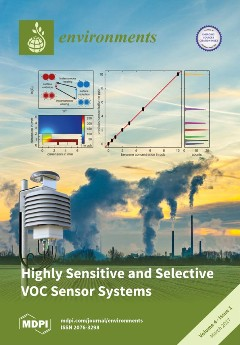Prescribed rangeland burning in April is a long-standing practice in the Flint Hills region of eastern Kansas to maintain the tallgrass prairie ecosystem. The smoke plumes originating from these fires increases ambient PM
2.5 concentrations and potentially contributes to ozone (O
3) exceedances in downwind communities. Source apportionment research using Unmix modeling has been utilized to estimate contributions of Kansas rangeland burning to ambient PM
2.5 concentrations. The objective of this study was to investigate the potential correlations between O
3 and various sources of PM
2.5 that are derived from receptor modeling, and then to specifically estimate contributions of Kansas rangeland burning to ambient O
3 concentrations through regression analysis. Various daily meteorological data were used as predictor variables. Multiple regression models were developed for the eight-hour daily maximum O
3 as well as the daily contributions of the five PM
2.5 source categories that were derived from receptor modeling. Cross correlation was analyzed among residuals of the meteorological regression models for O
3 and the daily contributions of the five PM
2.5 source categories in order to identify the potential hidden correlation between O
3 and PM
2.5. The model including effects of meteorological variables and episodic contributions from fire and industrial emissions can explain up to 78% of O
3 variability. For non-rainy days in April, the daily average contribution from prescribed rangeland burning to O
3 was 1.8 ppb. On 3% of the days in April, prescribed rangeland burning contributed over 12.7 ppb to O
3; and on 7% of the days in April, burning contributed more than 7.2 ppb to O
3. When the intensive burning activities occur in days with high O
3 background due to high solar radiation or O
3 carryover from the previous day, the contributions from these episodic fire emissions could result in O
3 exceedances of the National Ambient Air Quality Standards (NAAQS). The regression models developed in this study demonstrated that the most valuable predictors for O
3 in the Flint Hills region include the O
3 level on the previous day, total solar radiation, difference between daily maximum and minimum air temperature, and levels of episodic fire and industrial emissions. The long term goal is to establish an online O
3 forecasting tool that can assist regulators and land managers in smoke management during the burning season so that the intensive burning activities can be planned to avoid forecasted high O
3 days and thus prevent O
3 exceedance.
Full article





